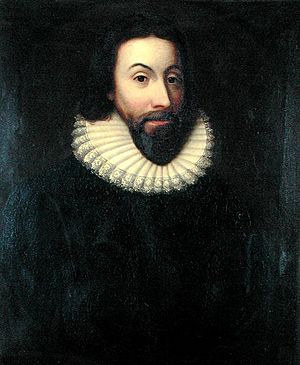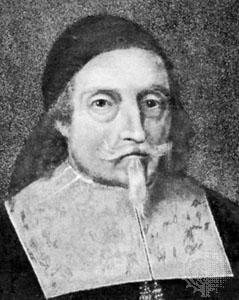Boston martyrs facts for kids
The Boston Martyrs is a name given by Quakers to four people. These were Marmaduke Stephenson, William Robinson, Mary Dyer, and William Leddra. They were put to death in the Massachusetts Bay Colony between 1659 and 1661. This happened because of their Quaker religious beliefs.
Other Quakers also faced severe punishments in Boston. Some were whipped and forced to leave the colony. In 1661, King Charles II of England ordered Massachusetts to stop executing Quakers. Later, England took away Massachusetts's special charter. This meant England had more control.
Contents
Why Boston Was Founded
The city of Boston was started by a group called the Puritans. They came from England with their leader, John Winthrop, in 1630. They named the new settlement after Boston, a town in England.
Around the same time, in the 1640s, a new religious group began in England. This group was called the Quakers, and their founder was George Fox. The Puritans in England often treated Quakers badly. Because of this, many Quakers left England in the 1650s to share their beliefs in new places.
Mary Dyer's Early Life and Beliefs
Mary Dyer was an English Puritan who lived in Boston. In 1637, she supported Anne Hutchinson. Anne believed that God could speak directly to people, not just through church leaders. Mary and Anne started Bible study groups. This was against the laws of the Massachusetts Colony.
Because of these beliefs, Mary Dyer, her husband, Anne Hutchinson, and others were forced to leave the colony in 1638. They moved to Portsmouth in the Rhode Island colony. There, they joined the religious group they had started.
Quaker Voyages to America
In 1656, a ship called the Speedwell arrived in Boston. It carried eight Quakers, including Christopher Holder, John Copeland, and William Brend. Boston laws required that authorities be told about new arrivals. So, all eight Quakers were immediately brought to court.
Governor John Endecott ordered them to be put in prison and then sent away from the colony. Soon after, Mary Dyer also arrived in Boston from Rhode Island and was put in prison. After eleven weeks, the Quakers from the Speedwell were sent back to England. But they quickly planned to return.
In 1657, another group of Quakers sailed to Massachusetts on a ship called the Woodhouse. This ship landed at Long Island. Five Quakers got off at New Amsterdam (which is now New York City).
Challenges with Governor Endecott
Mary Dyer had gone back to England in 1652. There, she learned about the Quaker faith from George Fox and became a Quaker. She and her husband returned to Rhode Island in 1657.
Later, Christopher Holder and John Copeland came back to Massachusetts. They met with other Quakers in towns like Sandwich. However, Governor Endecott ordered their arrest in Salem. They were kept in prison for several months.
After being released, they were arrested again in April 1658 and whipped. In June, they went to Boston and were arrested once more. As a punishment, Copeland's right ear was cut off. Katherine Scott, who was Anne Hutchinson's sister, spoke up for them. She was also imprisoned and whipped.
Strict Laws Against Quakers
At the end of 1658, the Massachusetts government passed a new law. This law said that any Quaker who was not from the colony would be arrested and put in prison. If they were found to be a Quaker, they would be forced to leave the colony or face death.
For people living in the colony who became Quakers, the law said they would be imprisoned for a month. If they continued to hold their Quaker beliefs, they would also be forced to leave or face death. Many Quakers were arrested and sent away under this harsh law.
The Story of Stephenson and Robinson
Marmaduke Stephenson was a farmer in England. In 1655, he felt a strong religious calling. He wrote that "as I walked after the plough, I was filled with the love and presence of the living God." He left his family and traveled to Barbados in 1658.
After some time, he heard about the new strict law in Massachusetts. He then went to Rhode Island. There, he met William Robinson, a merchant from London and another Quaker. In June 1659, they, along with two others, went into the Massachusetts colony. They wanted to protest the unfair laws. Mary Dyer also went for the same reason.
The three were arrested and sent away. But Robinson and Stephenson returned and were put in prison again. While they were in prison, ministers were asked to talk with them about their beliefs. Mary Dyer came back to protest how they were being treated, and she was also imprisoned. In October 1659, Governor Endecott, following the law, ordered that the three of them be put to death.
Images for kids





